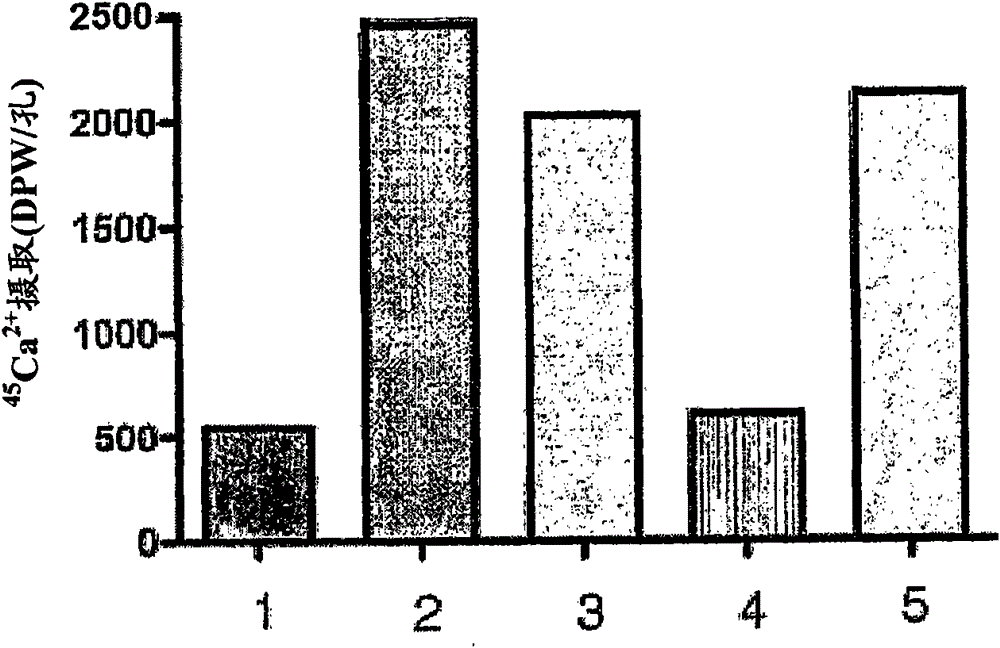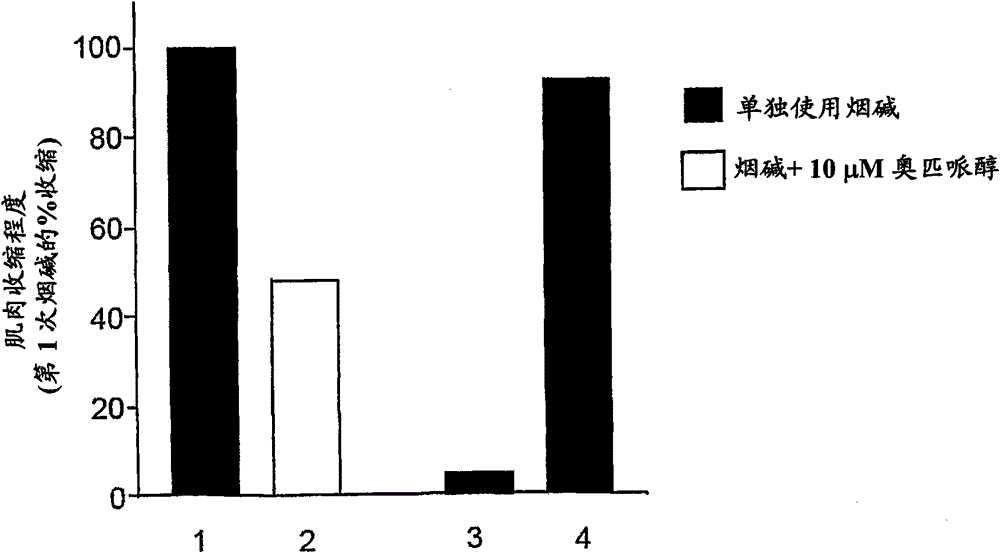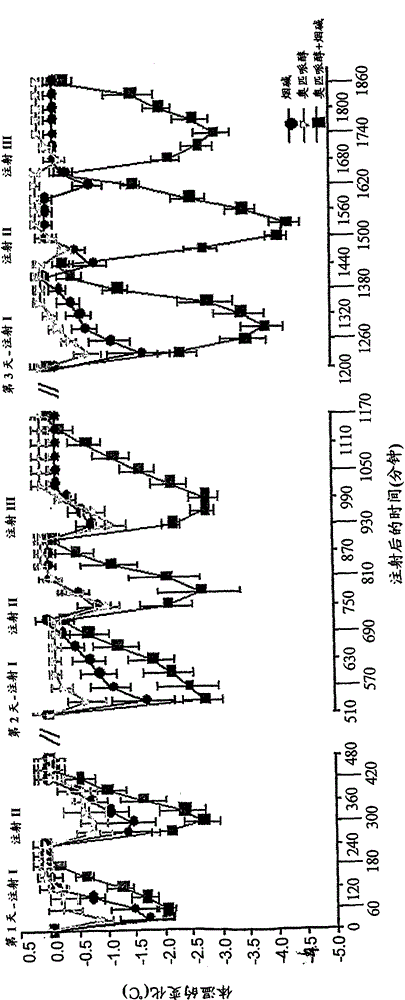Compositions comprising nicotinic agonists and methods of use thereof
A technology of agonists and nicotine, applied in the direction of medical preparations containing active ingredients, drug combinations, active ingredients of heterocyclic compounds, etc., can solve problems such as failure
- Summary
- Abstract
- Description
- Claims
- Application Information
AI Technical Summary
Problems solved by technology
Method used
Image
Examples
Embodiment 1
[0101] Example 1. Effect of opipramol and MCN-A-343 on nicotine-induced calcium influx in cultured cells.
[0102] SK-N-SH human neuroblastoma cells known to express nAChR were cultured in Dulbecco / Vogt's Modified Eagle's Minimal Essential Medium (DMEM) in 24-well plates until confluent. will contain 45 Ca 2+ While DMEM (1) without any other additives or 50 μM nicotine containing 45 Ca 2+ DMEM (2) or containing 50 μM nicotine + 10 μM opipramol 45 Ca 2+ DMEM (3) was added to cells cultured in 24-well plates and pre-incubated with medium only for 15 minutes, followed by a quick wash. Intracellular radioactivity was determined for each condition. The same medium containing nicotine was also added to cells that had been pre-incubated for 15 minutes with 50 μM nicotine alone (4) or 50 μM nicotine + 10 μM opipramol (5). Measured after 10 minutes 45 Ca 2+ ingest. Activation of nicotinic receptors results in calcium influx, so it is a measure of nicotinic receptor activity. ...
Embodiment 2
[0104] Example 2. Effect of opipramol on nicotine-induced smooth muscle contraction and on nicotine-induced desensitization in guinea pig ileal preparations.
[0105] The free end of guinea pig ileal smooth muscle was connected to a force displacement transducer. The isometric tension of smooth muscle is continuously monitored by outputting the preamplified transducer signal to the computer. Muscle contraction was induced by the addition of 25 μM nicotine. The peak obtained by quantifying this concentration of nicotine by a displacement transducer and normalizing it, defined as 100% contraction, as figure 2 Shown in black bars on the left (1st stimulus; bar 1).
[0106] Opipramol reduced the nicotine effect to approximately 50% of that induced by nicotine alone (stimulus 1; bar 2). Ten minutes after the addition of nicotine, the ileal preparations were washed with physiological solution, and then nicotine at a final concentration of 25 [mu]M was added to the muscle prepara...
Embodiment 3
[0108] Example 3. Effect of opipramol on nicotine-induced hypothermia in rats.
[0109] The rats were divided into the following 3 treatment groups, 5 rats in each group: 1. Treated with nicotine (2 mg / kg); 2. Treated with opipramol (20 mg / kg); 3. Treated with opipram Alcohol (20mg / kg) and nicotine (2mg / kg) treatment. Rats were injected with nicotine twice on the first day ( Figure 3A , D-1, left panel), injected 3 times on the second day ( Figure 3A , D-2, middle panel), injected 3 times on the third day ( Figure 3A , D-3, right panel). The interval between injections was 3 hours, based on the time required to return to normal body temperature. Nicotine was injected with or without opipramol, and body temperature was measured every 30 minutes. The results are shown in Figure 3. ( Figure 3A : Solid circle - inject nicotine (2mg / kg) to rats, 3 times a day, 3 hours apart, for 3 consecutive days (N = 5); inverted triangle - inject opipramol (20mg / kg) to rats , 3 times...
PUM
 Login to View More
Login to View More Abstract
Description
Claims
Application Information
 Login to View More
Login to View More - R&D
- Intellectual Property
- Life Sciences
- Materials
- Tech Scout
- Unparalleled Data Quality
- Higher Quality Content
- 60% Fewer Hallucinations
Browse by: Latest US Patents, China's latest patents, Technical Efficacy Thesaurus, Application Domain, Technology Topic, Popular Technical Reports.
© 2025 PatSnap. All rights reserved.Legal|Privacy policy|Modern Slavery Act Transparency Statement|Sitemap|About US| Contact US: help@patsnap.com



